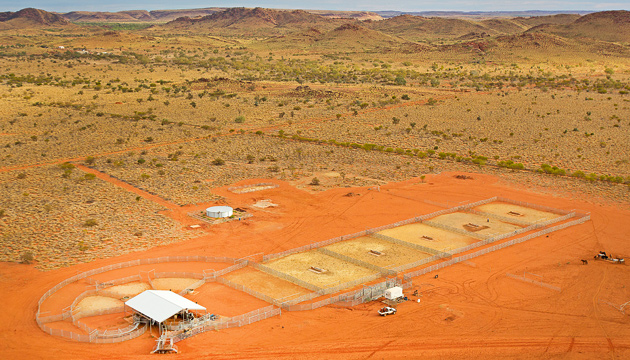A set of Thompson Longhorn yards stand out against the red dirt at Uaroo station in the Pilbara.
Story by Nathan Dyer
In the back corner of a factory in the Darling Downs, the articulated arms of a dual robotic welder glide above a half-built cattle crush. Moving from one join to the next, the robots perform perfect weld after weld. Nearby, Byron Wolff watches the machines with satisfaction, explaining how the robots have allowed his business to expand.
“It gives us massive production capacity,” says the 40-year-old mechanical engineer who took over Thompson Longhorn from his father, Alwyn, in 2007. “It allows us to make high volume runs, and it’s a lot better for our staff because there are certain tasks it can do that can become monotonous for people.” Based at Goomburra, about 75 kilometres south-east of Toowoomba, the family-owned company has pioneered automated livestock-handling equipment, building a reputation both domestically and internationally for its state-of-the-art designs.
Walking back to his office from the factory floor, Byron explains how technology is at the heart of everything the business does. A dedicated design team, with four full-time staff, runs the latest 2D and 3D modelling software, and a recently built paint shop has seen the introduction of industrial two-pack paint technology for better corrosion protection on finished products. Roughly half of the company’s profits are reinvested each year into research and development.
Byron says innovation is crucial to solving many of the problems arising from dealing with remote clients. “For 18 months we’ve been using drones to do site survey work,” he says. “We’ll go to a site with existing infrastructure and fly the drone, take some images directly over the site, then scale that imagery and feed it into CAD [design software] so the customer can see how new improvements integrate with their existing facilities.”
This story excerpt is from Issue #109
Outback Magazine: Oct/Nov 2016










